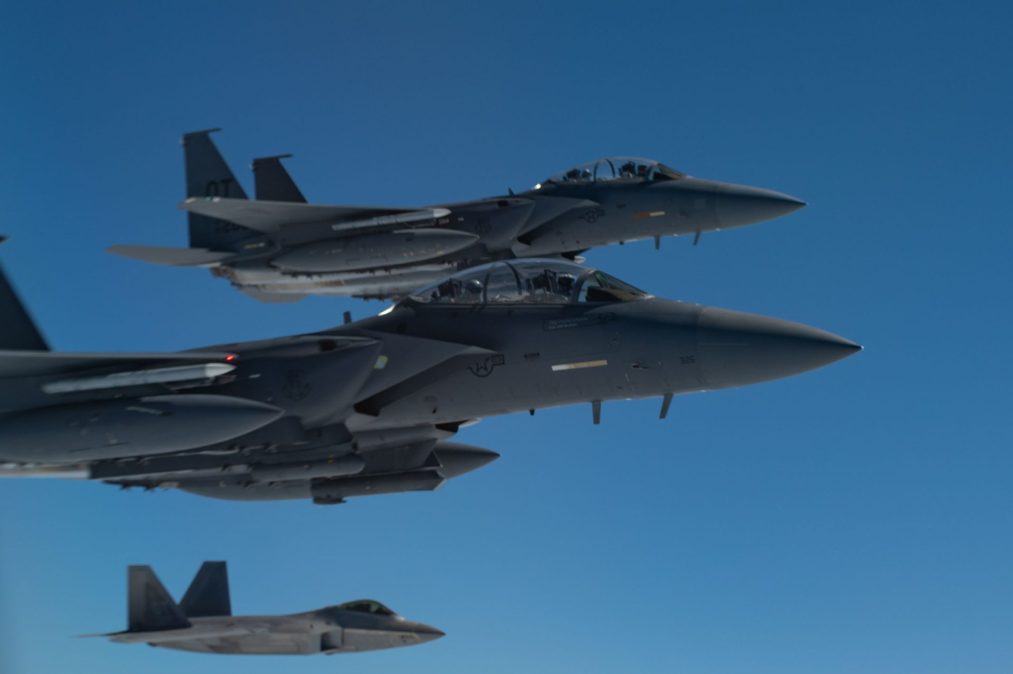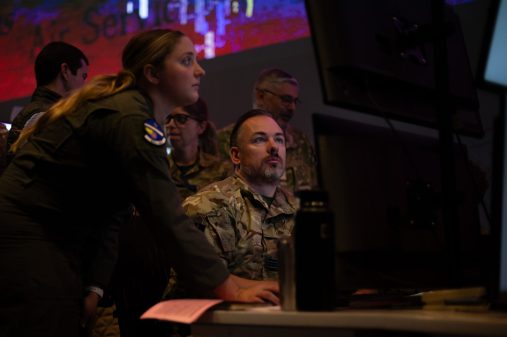Air Force eyeing AI, data analytics to help improve readiness levels

The Air Force is moving “as fast as possible” to integrate artificial intelligence and machine learning tools into its efforts to boost readiness levels and prepare for future conflicts, according to Chief of Staff Gen. David Allvin.
As part of its plan to “reoptimize” for great power competition, the service is revamping how it generates readiness for contested environments in the Indo-Pacific by conducting new large-scale exercises, enhancing supply chains and more. Through these initiatives, the Air Force is looking at how AI and ML can enhance preparedness by improving command and control in operations and the way the organization accounts for spare parts, Allvin said Wednesday during a media roundtable with reporters.
But to do so, the service needs to integrate data from various siloed systems, he noted.
“I think one of the things that I think we probably regret the most is how we developed our individual datasets and networks as bespoke, organic things, and so it’s hard to connect them,” Allvin said. “The data is all there, it’s putting it together, developing the algorithm and gaining the insights that will help us to learn faster.”
The Air Force is learning about command-and-control needs and how AI can play a role from its recent Bamboo Eagle events, a new exercise series intended to test out the service’s Agile Combat Employment (ACE) concept that looks to scatter deployed combat aircraft out of smaller bases while working closely with mobility aircraft in the fleet.
The exercises demonstrate what the Air Force needs to do to effectively execute that deployment and where it needs to improve, he noted.
“Some of that has to do with better ingesting situational data to be able to say, ‘At this time right now, what do I know that I didn’t know when I made the plan,’ to be able to update the plan and maybe re-orchestrate how the post operations may go,” Allvin said.
The Air Force is planning another large-scale exercise — known as Return of Forces to the Pacific (REFORPAC) — slated for summer 2025. Building off of Bamboo Eagle, the exercise will address how mission-ready the service would be if it needed to deploy in a complex, contested environment, particularly how it would sustain operations and conduct logistics while under attack.
While issues surrounding AI for command-and-control efforts might still need to be worked through, the technology is a bit more mature for how the Air Force understands and prepares its inventory of spare parts. The service currently has a better understanding of its individual weapon systems and predicting where they are, when they might break and what additional parts it needs to have at the ready, Allvin said.
“Those are sort of things we can play around with ahead of time and see if that particular algorithm or that particular methodology worked, and how well it increased operational impact,” he told reporters.
The service already has some data-analytics tools and platforms that help it make better-informed logistics decisions, such as the Basing and Logistics Analytics Data Environment (BLADE) platform.
Allvin said the system has improved the service’s understanding of its stockpiles and other logistics factors that affect readiness levels over the last year. Moving forward, the Air Force wants to use those data-analytics tools to get even better at pinpointing which specific parts are most likely to break and when.
“In the past, we’ve sort of lumped it all into weapon system sustainment, and that sort of is a peanut butter spread across a lot of different weapon systems, and so everybody gets marginally healthier [and] marginally sicker,” he said. “When we try and … pick that out and be more specific about, if you have access to these parts on this timeline, then that’s going to enable that particular platform, or series of platforms, to be able to be more mission-capable, faster. That’s just more precision.”






